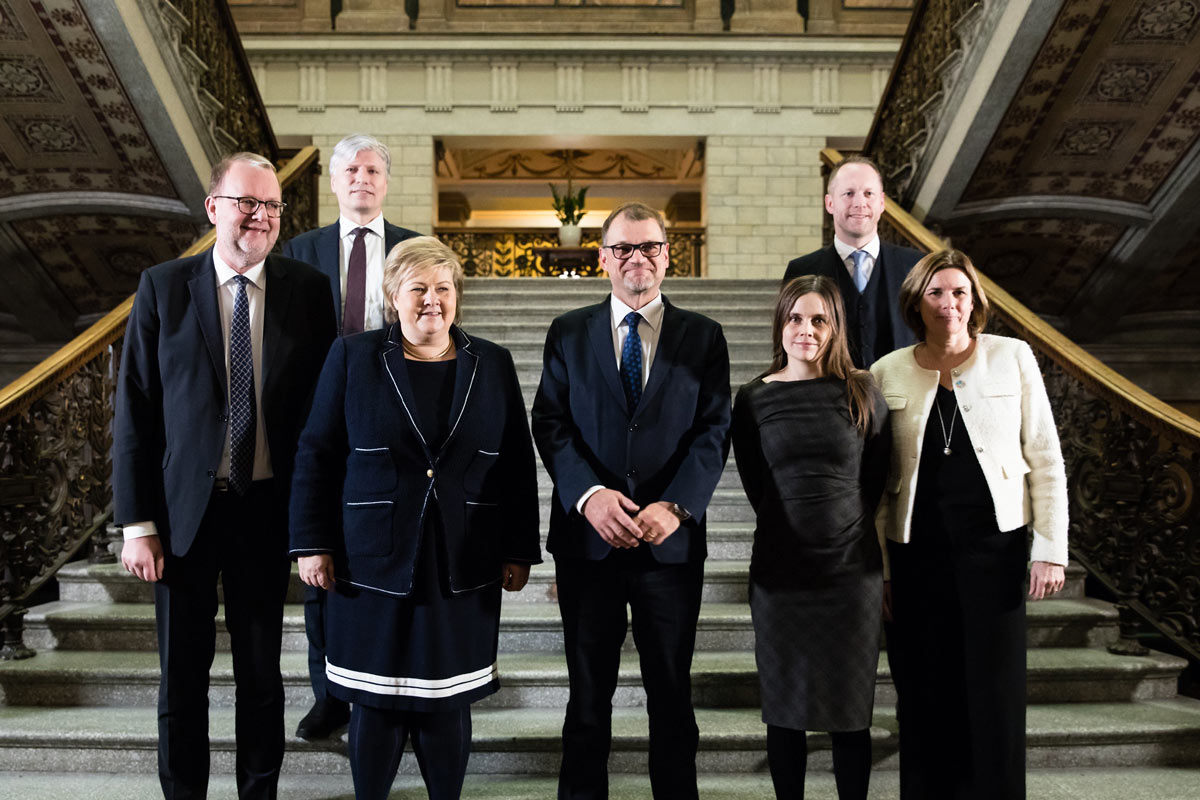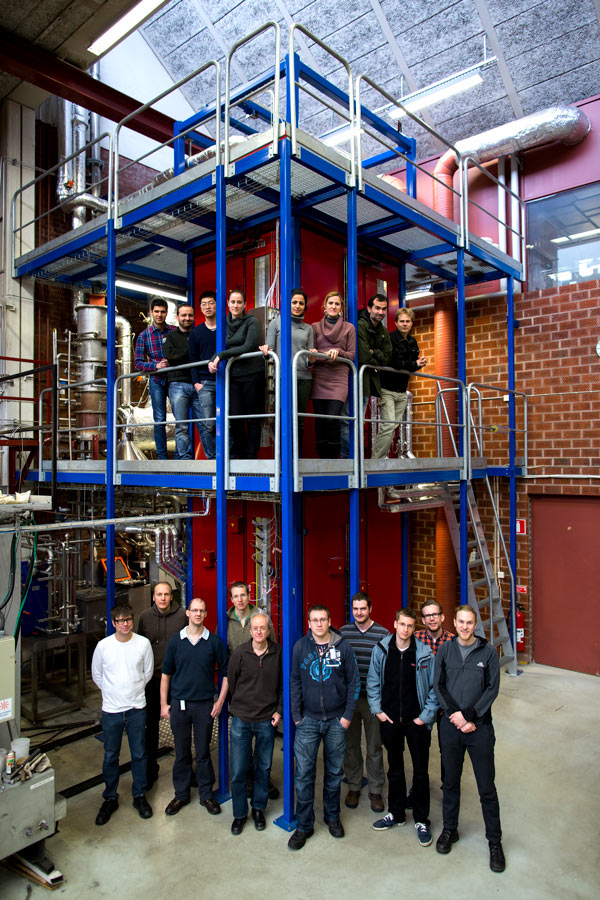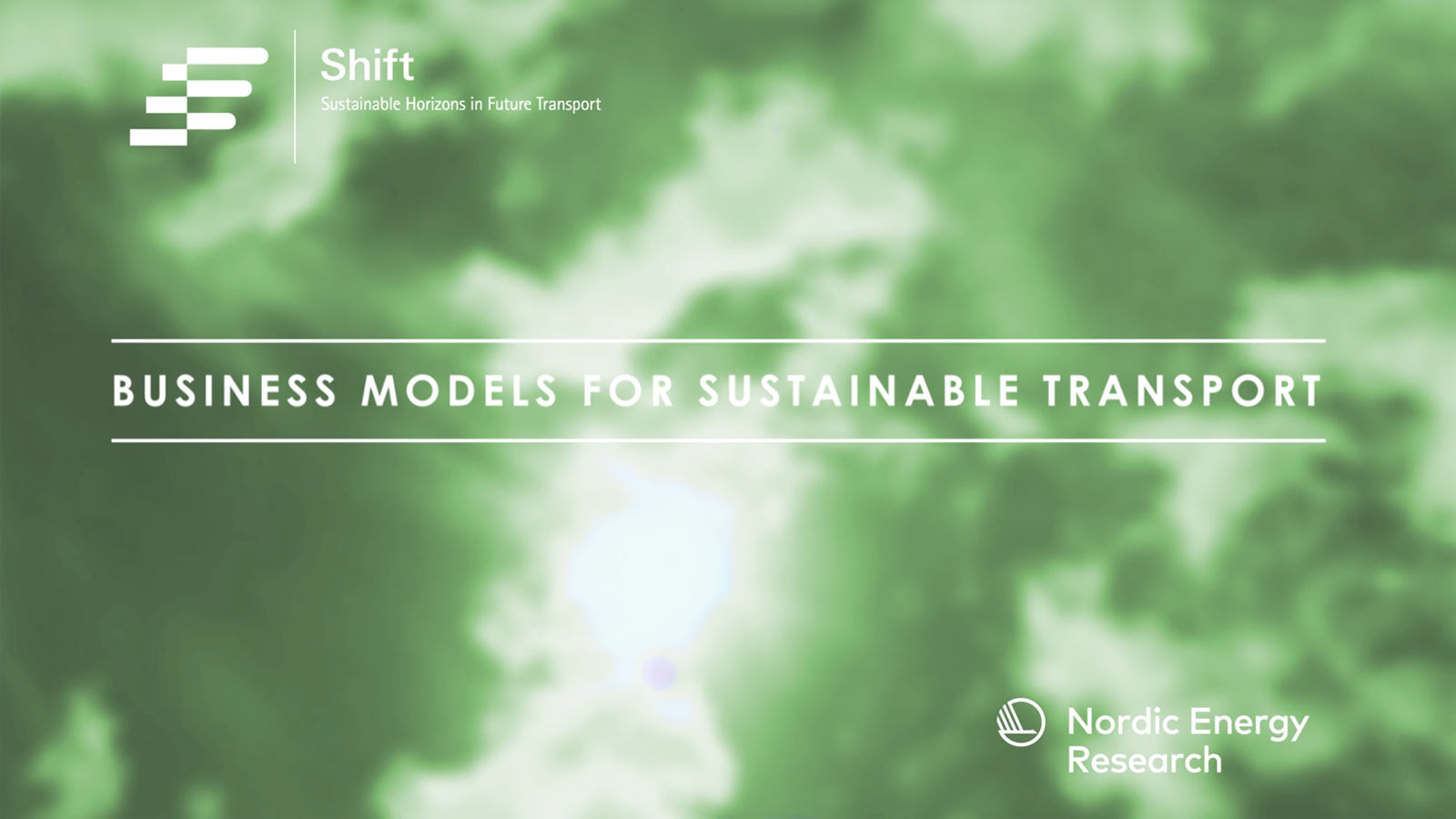
Carbon Neutral Nordics
Cutting-edge Nordic research on Energy and climate solutions
We have a global climate crisis...
we must act now
No region in the world is better positioned to do this than the Nordics
The Nordic countries have a long tradition of working together on climate and environmental policy
As well as one of the most integrated electricity markets in the world
We want to
lead by example

Photo: Laura Kotila / Valtioneuvoston kanslia
The aim of the Nordic countries is to be carbon neutral and to demonstrate leadership in the fight against global warming.
– The Nordic Prime Ministers' joint declaration. Helsinki, January 25th, 2019
Look to the
Nordics

The three Nordic flagship projects funded by Nordic Energy Research present practical, research-based solutions for a carbon-neutral Nordic region. Each project looks at a different aspect of reducing CO₂ emissions.
- Flex4RES
Flexible Nordic Energy Systems - Shift
Sustainable Horizons in Future Transport - Negative CO₂
Negative CO₂ Emissions with Chemical-Looping Combustion of Biomass

Flexible Nordic
Energy Systems
This is Flex4RES
The Flex4RES project looks at how increased flexibility in the Nordic energy system can facilitate carbon-neutrality in the Nordics, and in Europe.
“In order to become carbon-neutral, the Nordic region needs to build more sources of renewable electricity. The Nordics are well positioned to do this, but in order to achieve the largest possible reductions in emissions the energy system will need to become more flexible.”
Claire Bergaentzlé, DTU Project Manager Flex4RES

What is
flexibility?
“In Flex4RES, electricity supply or demand is considered flexible when it is possible to regulate the increase or the decrease of generation or consumption in response to system conditions (market signals / prices). That means flexibility is used as a measure to keep the balance between generation and consumption of electricity, balancing out the variability from variable supply and demand” – Flex4RES summary report
Findings from Flex4RES
A CO₂-free energy sector is possible, but Nordic countries need to speed up their actions
Nordic cooperation enables more efficient solutions without ignoring national needs.
The Nordics may play an important role in decarbonising the EU and beyond
A market-based approach helps to unlock flexibility through better market coupling
Technologies are mature, but their deployment need to be accelerated
Flexibility is important on both the demand and supply sides

The Nordic countries already have a partially-integrated electricity market
This means that electricity can be bought and sold across national borders.
For example, Norway can sell electricity from hydropower to Denmark, and Denmark can sell electricity from wind to Norway.
But there is still a need for increasing this type of trade, and for improving cooperation on energy across national borders. There is also potential for exporting more renewable energy to the rest of Europe.
The Flex4RES results show that – based on current technology – the Nordic energy sectors (electricity and heat) could be carbon neutral as soon as the 2030s. But there are barriers to increased flexibility, mostly related to the level of policy.
Learn more about the Flex4RES project
Read the policy brief
Sustainable Horizons
in Future Transport
This is Shift
The Shift project looks at ways transportation can be de-carbonised, both through technologies and through behaviour changes.
“Transportation represents a considerable share of the Nordic greenhouse gas emissions. But the Nordic region has the potential to be a world-leader in decarbonizing transport. We have the scientific knowledge, various technical solutions, and may continue to implement the polices needed to meet this challenge. Hopefully we can inspire other regions!“
Julia Hansson, IVL Project Manager Shift

How can we decarbonize
the transport sector?
CO₂ emissions from the transport sector require the most drastic emissions cuts if we are to achieve a carbon neutral Nordic region.
Over the past 4 years the Shift project has integrated various perspectives on transport:
- Transport modal shifts (changes in transport types)
- Transport technology options
- New transport business models
- And travel behaviour
Shift has carried-out analysis in three key areas:
- Urban passenger transport
- Long-haul freight
- And urban logistics
These analyses can inform smarter transport and energy policy.
Findings from Shift
It is possible to drastically reduce transport greenhouse gas emissions and reach carbon neutrality in the Nordic region by 2040-2050 but strong and immediate actions are required.
Transport policies and programmes should be designed to create socially inclusive solutions.
National policy instruments must be better coordinated to prevent effects from overlapping which may reduce their effectiveness.
Climate policies for transport must be reformed to meet and incentivize electrification and to consider target conflicts.
Continue to commercialize and deploy a broad set of key transport innovations in the Nordic region.
Charge vehicles on a per kilometre basis according to the marginal external costs of their driving.
Do you want to learn more about the Shift project?
Read the project summaryPolicy Briefs:
- Super-green car premium
- Prospects for low-carbon options
- Mobility as a Service (MaaS)
- Decarbonizing Nordic long-haul and urban freight transport
- Electric roads
- Smart Mobilities: A Gendered Perspective
- Examining the nature of technological change
- How to reform taxation of road transports for promoting electrification
- Strong link between charging infrastructure and adoption of electric vehicles

Negative CO₂ Emissions
with Chemical-Looping Combustion of Biomass
This is Negative CO₂
Negative CO₂ is a research project that looks at capturing CO₂ from burning biomass by means of an innovative –and potentially revolutionary –energy conversion technology called Chemical-Looping Combustion (CLC) of biomass. This combination is commonly called Bio-CLC.
“If we are to meet the climate target of the Paris agreement, carbon dioxide emissions cannot exceed the 'climate budget'. With today's emissions, this budget will be spent in just ten years if we are to limit the global temperature increase to 1.5 degrees Celsius. We therefore need effective methods for removing carbon from the atmosphere.“
Anders Lyngfelt, Chalmers Project Manager Negative CO₂
Climate-positive
energy
We can produce energy while removing CO₂ from the atmosphere. This is not only good for the atmosphere, but it would transform ‘emissions guilt’ into ‘climate-positive energy’.
The Negative-CO₂ project is developing an energy-conversion process where the CO₂ from burning biomass can be efficiently captured. It can then be securely stored underground, preventing the CO₂ from ever being released into the atmosphere.
Findings from Negative CO₂
Chemical Looping Combustion
Normal combustors burn fuel together with air, producing emissions that are a mix of gases, including CO₂ and nitrogen. The CO₂ in this flue gas is usually low concentration, and costly to separate.
Negative CO₂
Because the flue gas from CLC is near-pure CO₂, CLC is estimated to have at least 50 percent lower energy penalty – and incremental cost – compared to commercially established CO₂ capture technology.
As new trees are planted to replace harvested forest, they will naturally absorb CO₂ from the atmosphere. When the trees are eventually used as fuel in CLC, this CO₂ will be captured, not released back into the atmosphere, hence the meaning of the phrase, 'negative emissions'.
Chemical Looping Combustion in action
Our project partner SINTEF showing their principal researchers in action at their CLC test rig near Trondheim, Norway.
Does it work?
Yes – It does!
Over 11000 hours of pilot plant operational testing on 46 different rigs, with over 500 hours of testing performed in this Flagship project.
Previous work has focused on fossil fuels. The important contribution of the Negative CO₂ Flagship project is to show it works with biomass and can be used for negative emissions.

Swedish CO₂ emissions from biomass (larger point sources) are about 31 million tons (Mt) /year. Sweden’s fossil CO₂ emissions are 43 Mt/year. If fossil CO₂ emissions are stopped and CO₂ from biomass is captured and permanently store, Sweden can reduce emissions by more than 150% and start the clean-up of the atmosphere. Finland has similar opportunities given its large biomass industry.
Do you want to learn more about the Negative CO₂ project?
Go to project website



